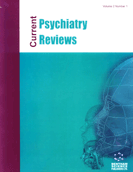Abstract
Since 1982 isotretinoin has been implicated in numerous reports that describe depression, behavioral change and suicidality in patients. Several epidemiological studies have investigated the association suggested by these reports. Results have varied. Other research has attempted to establish a plausible biological mechanism associating isotretinoin with these behavioral changes. Current research has focused on the hippocampus. It is possible that individuals that experience these side effects have a predisposition to these outcomes. There is need for additional prospective studies and randomized clinical trials that consider both the presence of a potential mechanism as well as the methodological weaknesses in the current literature. Additional basic science research also needs to further evaluate this potential mechanism.
Keywords: Isotretinoin, Accutane, depression, suicide, psychosis, acne, anxiety, aggression, impairment in self-image, psoriasis, ichthyasis, systemic lupus erythematosus, adverse psychiatric effects, isotretinoin use, Healthcare products Regulatory Agency, MEDLINE, PubMed, ScienceDirect, EMBASE, Web of Science databases, cohort analysis, mental health services, dermatologist, risk of depression, Relative risk values, nonrandomized clinical study, Beck depression inventory, topical treatment group, Case-Crossover Studies, skin cancer treatment, violent behavior, post-natal depression, social withdrawal, reduced appetite, epidemiologic study, retrospective, suicidal behavior, heightened risk for depression, SOCIATING ISOTRETINOIN, cognitive dysfunction, dysfunction, neurogenesis, cell proliferation, orbitofrontal cortex, antibiotic group, conjunction, stress-diathesis model, predisposing factor
 35
35

